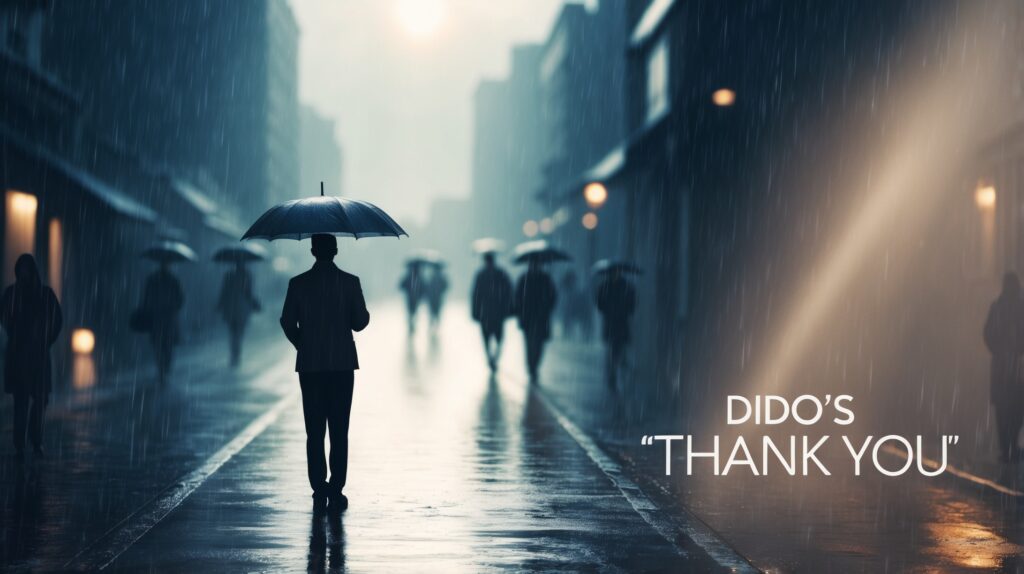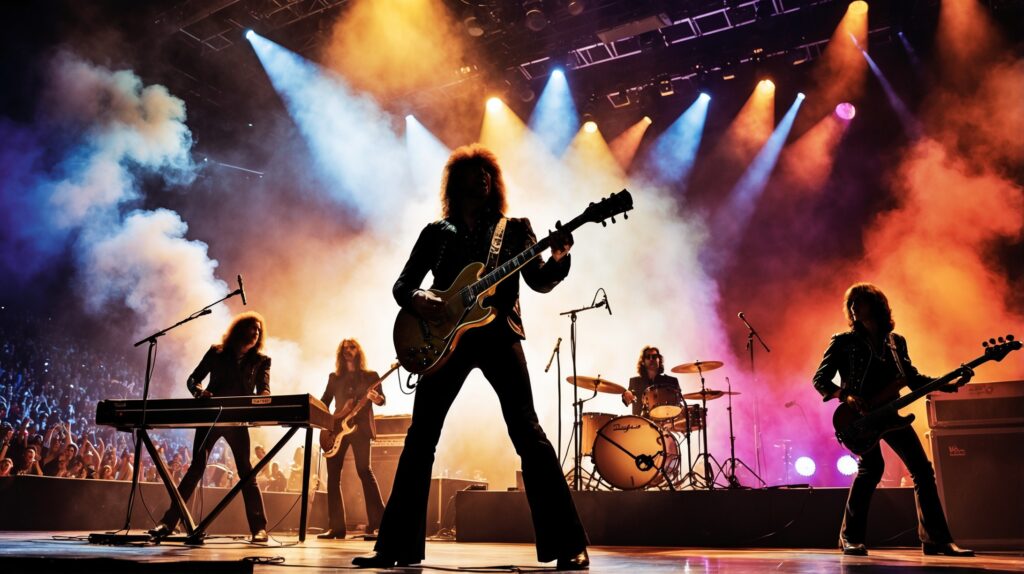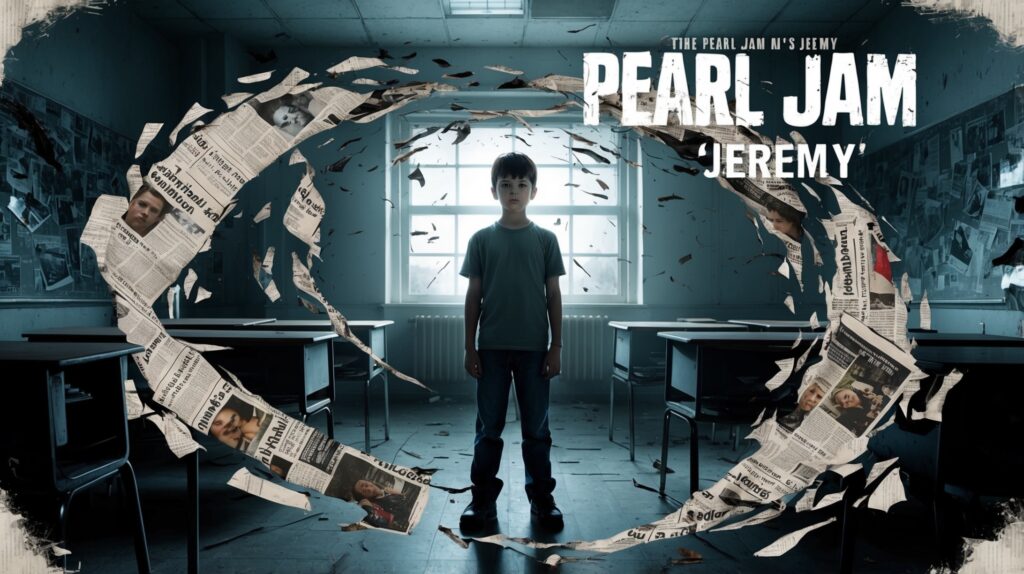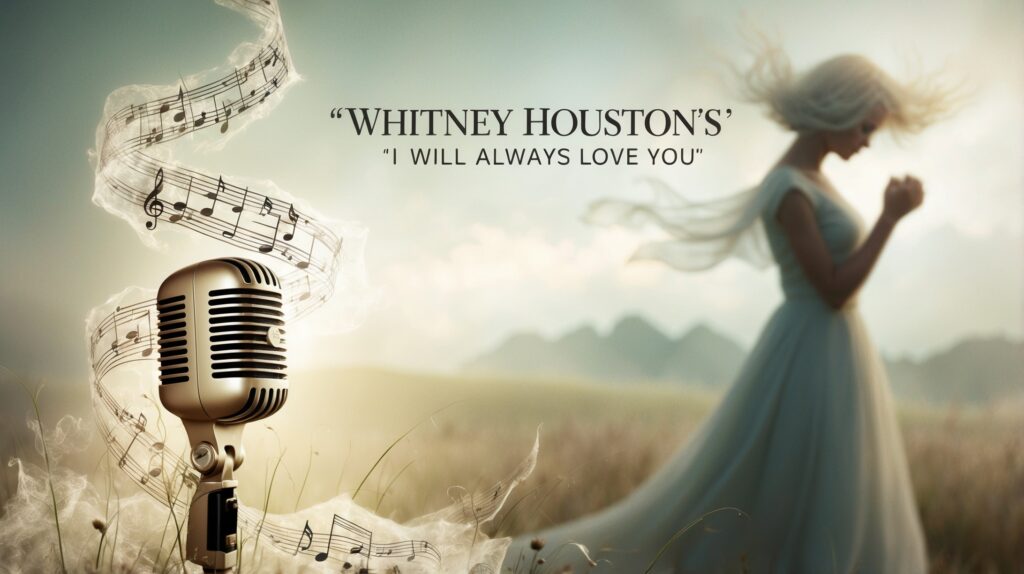Dido: A Journey Through Sound and Emotion
Dido’s “Thank You” marked a pivotal moment in her career, blending her unique sound with personal storytelling, and solidifying her influence in the changing music scene of the early 2000s.
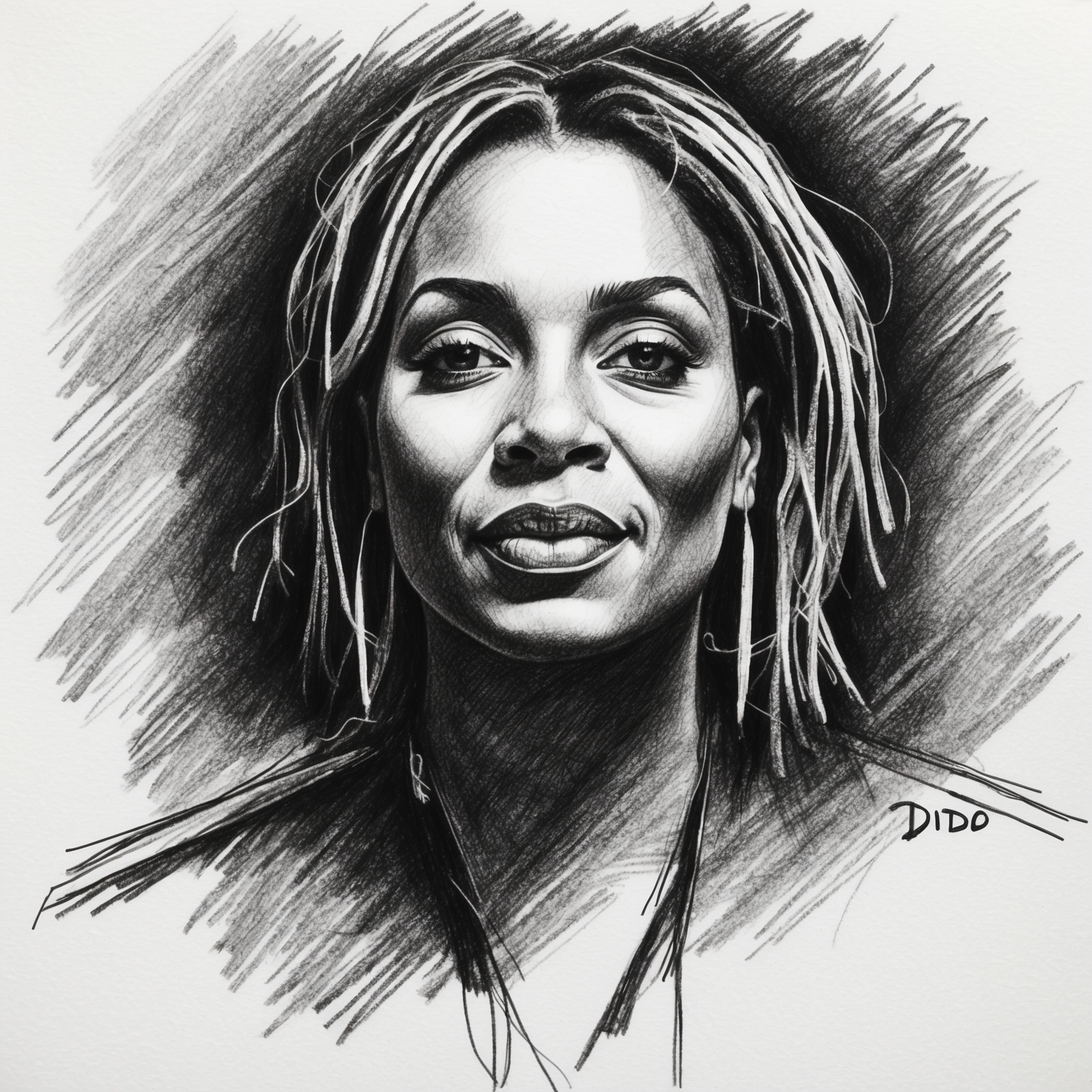
Dido, a name synonymous with soulful melodies and poignant lyrics, has been a defining voice in the music industry since the late 1990s. Born Dido Florian Cloud de Bounevialle O’Malley Armstrong on December 25, 1971, in Kensington, London, she was destined for musical greatness from a young age. Growing up in a creative household, Dido was exposed to numerous musical influences that would later shape her unique sound. Her pivotal song “Thank You”, released in 1998, catapulted her into the international spotlight and solidified her place in the annals of pop music history.
The early 2000s were a pivotal period for Dido, marked by the immense success of her debut album “No Angel”. “Thank You” was instrumental in her rise to fame, featuring prominently in pop culture, including a memorable sample by rapper Eminem in his hit “Stan”. This collaboration introduced Dido’s evocative vocals to a broader audience, showcasing the depth and versatility of her songwriting. At this time, the music scene was evolving, with a growing preference for artists who could deliver personal and introspective narratives – a niche where Dido’s talent shone brightly.
Further enhancing her artistry, Dido often collaborated with her brother, Rollo Armstrong of the electronic band Faithless, contributing to her signature blend of pop with electronic undertones. Her ability to synthesize personal experiences into universally relatable music has been a hallmark of her career. With “Thank You”, she offered listeners a glimpse into her emotional world, capturing the themes of gratitude and perseverance in the face of adversity. Dido’s contributions during this era not only enriched her own repertoire but also influenced emerging artists, leaving an indelible mark on the music landscape.
Exploring the Musical Genius Behind ‘Thank You’
Delving into the musical brilliance of Dido, the composer and voice behind ‘Thank You’, whose unique style blends pop, electronica, and timeless storytelling.

Background and Career: The song ‘Thank You’ was composed by not just a talented musician, but a visionary artist whose contributions to music have left an indelible mark. Dido, whose full name is Dido Florian Cloud de Bounevialle O’Malley Armstrong, is the creative force behind this evocative track. Born in London, Dido’s musical journey began at an early age, surrounded by a family that nurtured her burgeoning talent. Her educational path took her through the Guildhall School of Music and Drama, laying a foundation that would guide her through a career punctuated by poetic depth and heartfelt melodies. Dido’s early forays into music saw her experimenting with various styles, gradually carving out a niche that combined elements of pop, trip-hop, and electronica.
Musical Style and Influences: Dido’s musical style is notable for its ethereal quality, often weaving soulful vocals with minimalistic yet powerful instrumental arrangements. Her influences are eclectic, drawing inspiration from legendary artists like Bob Dylan and Neil Young, as well as from classical music and contemporary sound. This amalgamation of styles is evident in ‘Thank You’, where her unique blend of genres results in a sound that resonates with a wide audience. Her ability to convey profound emotions through simplicity sets her apart, offering listeners an introspective journey through her songs.
Role in the Song’s Creation: In ‘Thank You’, Dido played an instrumental role not only as the vocalist but as the heart behind the song’s composition. Her writing process often begins with a melody or a lyrical idea, which she meticulously crafts into a cohesive piece. ‘Thank You’ is a testament to her skill as both a composer and lyricist, where the music perfectly complements the deeply personal and optimistic themes conveyed in the lyrics. Dido’s signature touch is her ability to create music that feels universal yet highly personal, a quality that has endeared her to fans globally.
Celebrating Recognition and Influence
Thank You’ by Dido has garnered numerous awards and nominations, inspired many notable covers, and made appearances in films and TV, reflecting its broad influence.

Dido’s ‘Thank You’ has not only captured the hearts of audiences worldwide but also grabbed the attention of critics and artists alike. The song was part of Dido’s debut album, ‘No Angel,’ which brought her international acclaim. As a testament to its success, ‘Thank You’ has received numerous accolades and nominations over the years. Released in 1999, the song quickly gained momentum, earning a spot in the top ten charts in multiple countries. Thanks in part to its infectious melody and heartfelt lyrics, ‘Thank You’ helped Dido secure multiple award nominations. It was nominated for the Grammy Award for Best Female Pop Vocal Performance in 2002, further cementing its status as a classic. While the song didn’t clinch a Grammy, it did win the hearts of millions and remains influential in pop culture.The timeless appeal of ‘Thank You’ has inspired numerous covers by various artists, each bringing their unique flavor to the track. Notable artists, including Ellie Goulding and David Jordan, have performed their renditions, showcasing the song’s adaptability and lasting influence. The heartfelt emotion embedded in the song continues to resonate, making it a favorite choice for cover songs. Beyond musical awards and nominations, ‘Thank You’ has left its mark in visual media as well. Its evocative nature and relatable themes have led it to be featured in several movies, television shows, and even video games. The song’s cinematic quality makes it a perfect fit for soundtracks, enhancing memorable scenes in films like ‘Crossroads’ and TV series such as ‘Smallville.’ Its reach across different media platforms highlights its enduring legacy and widespread appeal.
Chart Triumph and Enduring Popularity of ‘Thank You’
Explore how ‘Thank You’ by Dido achieved chart success, its marketing strategy, critical reception, and long-lasting impact on pop culture.
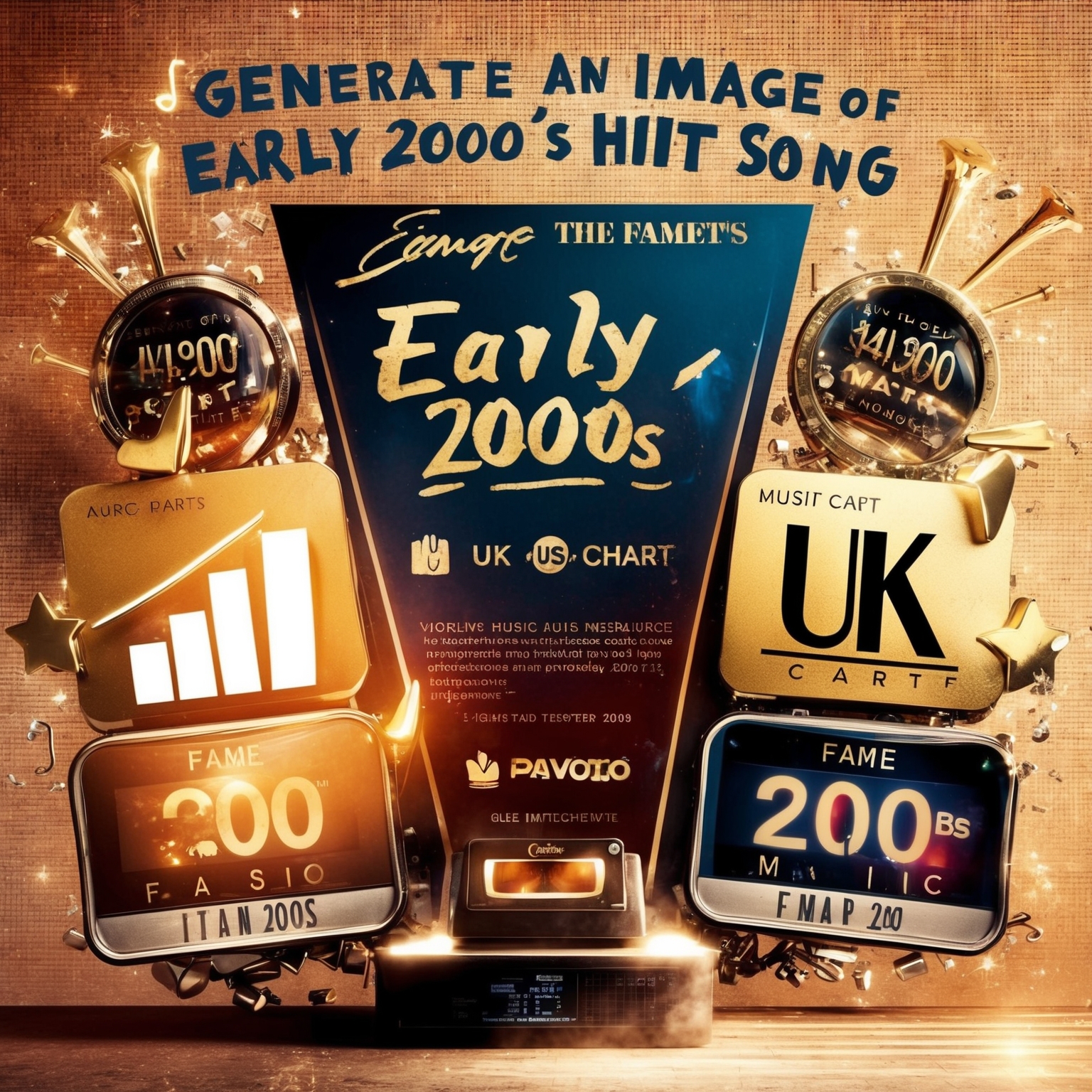
Released on March 6, 2001, ‘Thank You’ by Dido quickly rose to prominence and cemented its place in pop music history. The song initially debuted on the UK charts at a modest position, but its momentum didn’t take long to build. It reached its peak at number 3 in the UK Singles Chart, showcasing its popularity among listeners in the region. In the United States, the song was remarkably successful, reaching number 3 on the Billboard Hot 100, highlighting its cross-Atlantic appeal.
This success is particularly notable when considering the competitive musical landscape of the early 2000s, dominated by the likes of Britney Spears and *Nsync. Despite fierce competition, ‘Thank You’ carved out a unique space for itself, appealing to listeners with its poignant lyrics and haunting melody. It stands as one of Dido’s most successful singles and represents a pivotal moment in her career, confirming her status as a global pop artist following her prior hit, ‘Here with Me.’
The marketing strategy for ‘Thank You’ capitalized on its use in the movie Sliding Doors and sampling in Eminem’s ‘Stan,’ which amplified its reach and popularity. This cross-promotional strategy proved effective, with ‘Thank You’ becoming a standalone hit that resonated well beyond its initial release. Critically, it received widespread acclaim, praised for its emotive depth and Dido’s smooth yet powerful vocal delivery.
In addition to its chart success, the legacy of ‘Thank You’ persists in its lasting presence on streaming platforms and radio rotations worldwide. It consistently ranks on playlists dedicated to nostalgic 2000s music, ensuring continued discovery by new generations. The song’s reception and enduring legacy are further underscored by covers and adaptations by various artists, cementing its role as a modern classic in the pop genre.
Visual Storytelling: The Artistry of ‘Thank You’s’ Music Video
Explore how ‘Thank You’ by Dido gained a visual presence through fan videos and live performances, despite initially lacking an official music video.
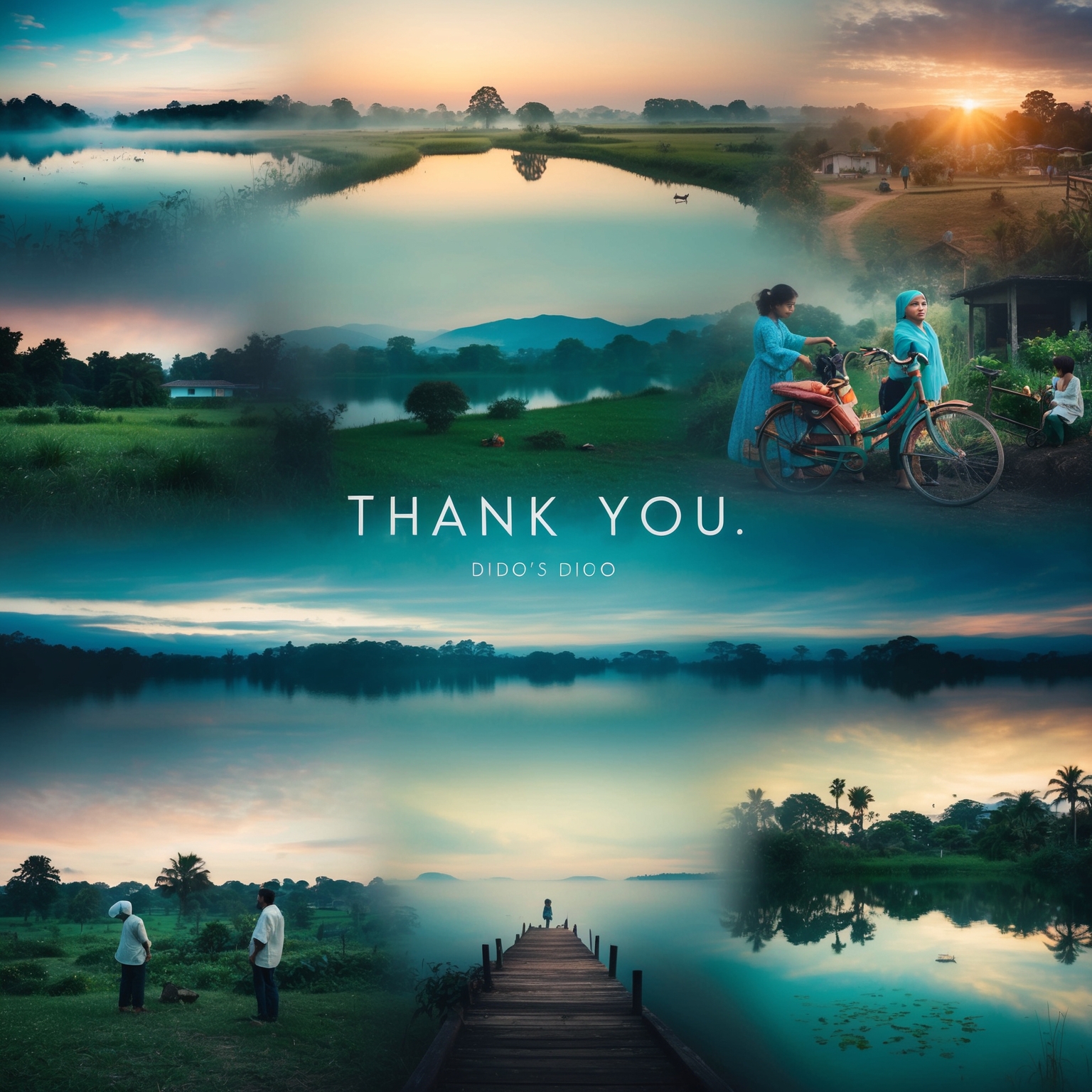
Although the original release of ‘Thank You’ by Dido did not have an official music video upon its initial release, the song’s visual presence was later strengthened by fan-made videos and live performances that truly captured its essence. Additionally, it was featured prominently in a video for the TV series ‘Roswell,’ expanding its reach and deepening the connection with its audience. Over the years, fans have crafted videos that merge the lyrics with visuals that evoke the song’s dreamy and introspective mood.
These fan-made interpretations play with themes such as hope amidst adversity and personal growth—concepts that the song is renowned for. Many of these videos portray vignettes where everyday scenes morph into moments of revelation, aligning perfectly with Dido’s storytelling. Blending footage of serene landscapes with evocative clips of ordinary life, fans manage to spotlight the track’s narrative about finding gratitude even in trying times.
Despite the absence of a high-profile director or famous appearances, the creative efforts of fans have allowed ‘Thank You’ to remain relevant and visually appealing. Through varied creative lenses, each video offers a unique narrative that resonates with listeners. Live performances of ‘Thank You’ also add another layer to its visual interpretation, transforming the song into a communal experience that enhances its emotive power. Each rendition contributes to the timelessness and enduring popularity of Dido’s heartfelt meditation on gratitude and resilience.
Dissecting the Musical Framework of ‘Thank You’
Explore the intricate musical structure of Dido’s ‘Thank You,’ where smooth melodies, harmonious vocals, and subtle instrumentation converge to create a soothing yet powerful listening experience.

‘Thank You’ by Dido is a song that elegantly weaves together a variety of musical elements to create a unique and memorable listening experience. The song is written in the key of B♭ major, utilizing a simple yet effective chord progression that contributes to its soothing and accessible nature. The tempo is set at a laid-back pace of around 80 beats per minute, perfectly complementing the relaxed, reflective mood that the lyrics convey.
The melody of ‘Thank You’ is characterized by its smooth and flowing lines, aligning seamlessly with the harmonious backup vocals that enrich the song’s texture. The harmony, created through carefully layered vocal tracks, adds a depth and warmth that highlights Dido’s ethereal voice. Rhythmic elements are understated yet crucial; the gentle percussion subtly underpins the song, allowing it to maintain a steady flow without overpowering the vocal focus.
Instrumentation in ‘Thank You’ plays a pivotal role in crafting its unique sound. The use of acoustic guitar provides a soft, melodic foundation, while subtle layers of keyboard and strings enhance the emotional resonance. These elements work together to create a lush, atmospheric backdrop that supports Dido’s poignant lyrical delivery. When viewed in the context of Dido’s discography, ‘Thank You’ marks a significant point in her artistic journey. Compared to earlier works, this song demonstrates a refined melding of electronic and acoustic elements, showcasing her evolving style and thematic maturity. An interesting anecdote about the recording session is that it took place in the renowned Cheiron Studios, famed for its high-profile pop music productions. The song was produced by the talented Rollo Armstrong, who played a crucial role in crafting Dido’s signature sound, steering it towards a more sophisticated and internationally appealing palette.
Diving Deep into the Heartfelt Lyrics of ‘Thank You’
Explore the heartfelt lyrics of Dido’s ‘Thank You,’ a song that intertwines themes of gratitude and emotional resilience through evocative storytelling and subtle literary devices.
I got out of bed at all
The morning rain clouds up my window
And I can’t see at all
And even if I could, it’d all be gray
But your picture on my wall
It reminds me that it’s not so bad
It’s not so bad
I drank too much last night, got bills to pay
My head just feels in pain
I missed the bus and there’ll be hell today
I’m late for work again
And even if I’m there, they’ll all imply
That I might not last the day
And then you call me
And it’s not so bad, it’s not so bad
And I want to thank you
For giving me the best day of my life
Oh, just to be with you
Is having the best day of my life
Push the door, I’m home at last
And I’m soaking through and through
Then you handed me a towel
And all I see is you
And even if my house falls down now
I wouldn’t have a clue
Because you’re near me
And I want to thank you
For giving me the best day of my life
Oh, just to be with you
Is having the best day of my life
And I want to thank you
For giving me the best day of my life
Oh, just to be with you
Is having the best day of my life
 The lyrics of Dido’s song “Thank You” resonate with authenticity, weaving a tapestry of gratitude interlaced with personal narrative and emotional depth. At its core, the song captures the essence of appreciation in the face of life’s trials, as seen through the eyes of a protagonist who finds solace in one special relationship. One of the main themes is the juxtaposition of a challenging day transformed by a simple act of kindness, which illustrates the profound impact human connections can have in lifting us from despair. This blend of personal and universal themes helps the song resonate deeply with listeners, transcending the specifics of its narrative to speak to a broad audience.
The lyrics of Dido’s song “Thank You” resonate with authenticity, weaving a tapestry of gratitude interlaced with personal narrative and emotional depth. At its core, the song captures the essence of appreciation in the face of life’s trials, as seen through the eyes of a protagonist who finds solace in one special relationship. One of the main themes is the juxtaposition of a challenging day transformed by a simple act of kindness, which illustrates the profound impact human connections can have in lifting us from despair. This blend of personal and universal themes helps the song resonate deeply with listeners, transcending the specifics of its narrative to speak to a broad audience.
Narratively, “Thank You” employs a first-person perspective, plunging the listener directly into the intimate sentiments of the artist. This perspective allows the song to maintain a diary-like quality that invites listeners to empathize with the protagonist’s emotional journey. The storytelling is straightforward yet impactful, as it outlines a day marked by difficulties that are abated by the thought of a loved one, highlighting the redemptive power of love and gratitude. This approach not only amplifies the song’s emotional impact but also enhances its relatability, as many listeners can find parallels within their own lives.
The use of literary devices in “Thank You” adds a rich layer to its lyrical quality. Metaphors and simple yet effective similes craft vivid imagery, such as when the protagonist describes their life as a series of adversities turned bright by the presence of their loved one. Additionally, Dido’s adept use of rhyme schemes creates a musical flow that complements the soothing and reflective melody, reinforcing the song’s calming effect. While “Thank You” shares thematic similarities with other works in the genre of pop and contemporary music, its emotive transparency and earnest expression stand out as hallmarks of Dido’s songwriting style. This lyrical analysis reveals how Dido masterfully intertwines narrative, emotion, and literary craftsmanship to produce a song that is both a personal reflection and a universal anthem of gratitude.
🎶 Did you know Dido’s Thank You was propelled to fame by Eminem’s Stan? Proof that a little ‘thank you’ can carry magic! #DidoFacts #ThankYouVibes 🎤✨ https://bit.ly/3UyjA8E
Click to Tweet

